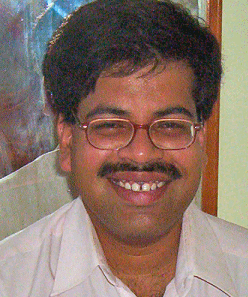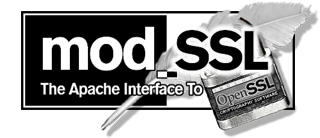
Installation of LAMP with OPENSSL
Download
-mySQL
-Apache
-PHP
-modSSL
-OpenSSL
SECTION 2
-Install OpenSSL
SECTION 3
-Install modSSL
SECTION 4
-Installation of Apache
SECTION 5
-mySQL Installation and configuration
SECTION 6
-Generating Certificate
SECTION 7
-LibPNG
and GD Library
SECTION 8
-Generating a CSR on an Apache Server with Mod_SSL
SECTION 9
-Installing a Global
Server Certificate on an Apache Server with Mod_SSL
Undertake a standard Linux Installation
Installed complete Multilib and Full Development Tools and Server
Configuration Tools, Complete Mail utility.
Later cyrus-sasl was removed. Better not to install cyrus-sasl. Further, it
was also giving an error of perl-DBD-mysql, and mysql-client. mysql-client
was removed and perl-DBD was kept. mysql that got installed along with
cyrus-sasl was forcefully removed with option --nodeps --allpackages.
1. Download the Packages:
The following packages have to be downloaded from the appropriate sites:
mySQL : From www.mysql.com download the latest mysql-standard-version.tar.gz. I had downloaded mysql-standard-4.0.24-pc-linux-gnu-i686.tar.gz
Apache : From www.apache.org. Go to the httpd section / downloads and get the apache source. Be careful about downloading the version. It has to be 1.3.something. For version 2, this manual may not be proper. I had downloaded the version : 1.3.33. (File : apache_1.3.33.tar.gz).
PHP : From
www.php.net. Download the latest source
file from this site. With version 5 I was unable to compile with apache. The
necessary changes were not getting incorporated with httpd.conf. So I had
used : php-4.3.11. File downloaded was php-4.3.11.tar.gz.
OpenSSL : From www.openssl.org. The
version downloaded was 0.9.8.
modSSL : From www.modssl.org. The version downloaded was 2.8.23 for Apache 1.3.33.
Copy all the tar files in /usr/local/src.
Section 2
Installation of OpenSSL :
cd /usr/local/src/openssl-0.9.8
./config no-threads -fPIC shared
make
make test
make install
Section 3
Installation of ModSSL :
cd ../mod_ssl-2.8.23-1.3.33/
./configure --with-apache=/usr/local/src/apache_1.3.33/ \
--with-ssl=/usr/local/src/openssl-0.9.8/ --prefix=/usr/local/apache
--enable-module=ssl --enable-module=so \
--enable-module=most --enable-shared=max
Section 4
Installation of Apache :
cd ../apache_1.3.33/
make
make certificate
make install
Section 5
Installation of mySQL : (The full installation of LAMP without
openssl is available at
http://www.oocities.org/subhasisg/scripts/lamp_new.html).
tar -xvf mysql-standard-4.0.24-pc-linux-gnu-i686.tar
groupadd mysql
useradd -g mysql mysql
ln -s /usr/local/src/mysql-standard-4.0.24-pc-linux-gnu-i686 mysql
cd mysql/
./scripts/mysql_install_db --user=mysql
chown -R mysql data
chgrp -R mysql .
./bin/mysqld_safe --user=mysql &
cp /usr/local/mysql/support-files/mysql.server to /etc/rc.d/init.d/mysql
/etc/rc.d/init.d/mysql restart
vi $HOME/.bash_profile
PATH=$PATH:/usr/local/mysql/bin
mysqladmin -u root password 'XXXXXXXX'
PATH=$PATH:/usr/local/bin; export PATH)
mysql -h localhost -D test -u root -pXXXXXXXX
cd ../php-4.4.0
./configure --with-mysql --with-apxs=/usr/local/apache/bin/apxs
make
make install
The above installation was giving an error libssl.so.0.9.8 not found
while doing
apachectl startssl
So searched for the file libssl.so
The output was :
./usr/local/ssl/lib/libssl.so.0.9.8 <--
./usr/local/src/openssl-0.9.8/libssl.so<--
The <-- marked paths were taken and put in the file /etc/ld.so.conf
Then ran ldconfig
After this apachectl startssl worked.
-----------------------
Section 6
Delete the directories :
/usr/local/apache/conf/ssl.*
cd /usr/local/apache_1.3.33/
make
make certificate
make install
Section 7
The following part was
required as GD library was not installed. Due to unavailability of GD, PHP
based drawing of images was not working. (This was requred for
implementation of a CAPTCHA). As a consequence, due to uninstallation of the
libpng and re-installation of the package afresh, my Linux GUI crashed and
till date it is not working saying that libpng.so not found, though the file
is very much there. Would post a rejoinder, if I come to know how to fix it.
:
LIBPNG:
Download LIBPNG from http://www.libpng.org/pub/png/
http://prdownloads.sourceforge.net/libpng/libpng-1.2.8-config.tar.gz?download
gunzip libpng-1.2.8-config.tar.gz
tar -xvf libpng-1.2.8-config.tar
cd libpng-1.2.8-config
./configure
make
make install
GD:
http://www.boutell.com/gd/
Version : gd-2.0.33
gunzip gd-2.0.33.tar.gz
tar -xvf gd-2.0.33.tar
cd gd-2.0.33
sh ./configure
make
make install
cd usr/local/src/php-4.4.0
./configure --with-mysql --with-apxs=/usr/local/apache/bin/apxs
./configure --with-mysql --with-apxs=/usr/local/apache/bin/apxs --with-gd
--with-zlib-dir=/usr/include
make
make install
/usr/local/apache/bin/apachectl startssl
It asked for the password.
The above installation was okay but the Certificate was not signed by any
CA. So this was giving an error message.
The installation of Web Server Certificate is as follows. The basic heads
for the same are mentioned in detail below. ( The following is taken from
the Verisign Web Site).
Section 8
Generating a CSR on an Apache Server with Mod_SSL |
|
|
|
|
|
|
Installation
|
|

http://www.php.net
http://www.openssl.org/

http://www.modssl.org

